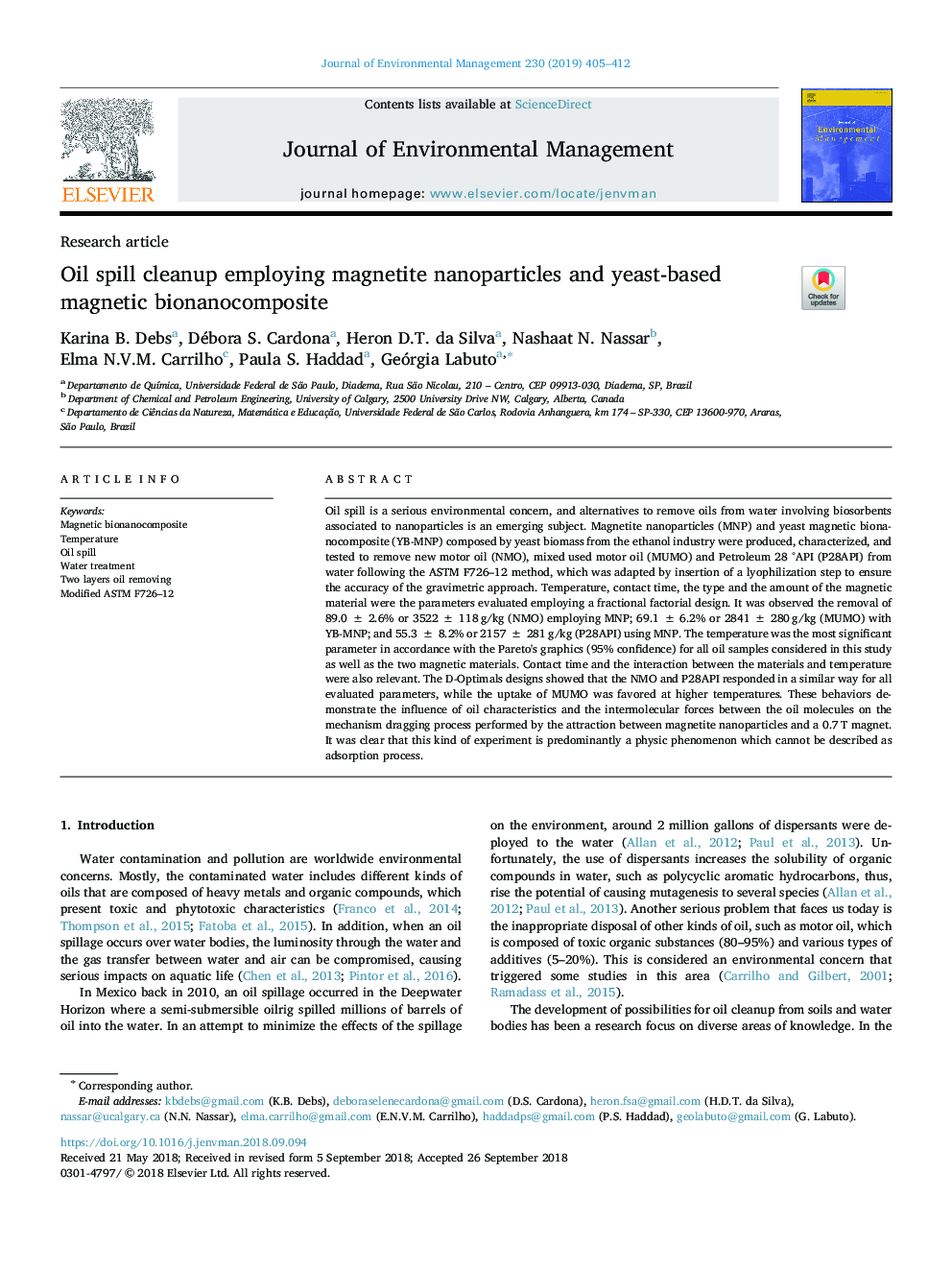| Article ID | Journal | Published Year | Pages | File Type |
|---|---|---|---|---|
| 11023263 | Journal of Environmental Management | 2019 | 8 Pages |
Abstract
Oil spill is a serious environmental concern, and alternatives to remove oils from water involving biosorbents associated to nanoparticles is an emerging subject. Magnetite nanoparticles (MNP) and yeast magnetic bionanocomposite (YB-MNP) composed by yeast biomass from the ethanol industry were produced, characterized, and tested to remove new motor oil (NMO), mixed used motor oil (MUMO) and Petroleum 28 °API (P28API) from water following the ASTM F726-12 method, which was adapted by insertion of a lyophilization step to ensure the accuracy of the gravimetric approach. Temperature, contact time, the type and the amount of the magnetic material were the parameters evaluated employing a fractional factorial design. It was observed the removal of 89.0â¯Â±â¯2.6% or 3522â¯Â±â¯118â¯g/kg (NMO) employing MNP; 69.1â¯Â±â¯6.2% or 2841â¯Â±â¯280â¯g/kg (MUMO) with YB-MNP; and 55.3â¯Â±â¯8.2% or 2157â¯Â±â¯281â¯g/kg (P28API) using MNP. The temperature was the most significant parameter in accordance with the Pareto's graphics (95% confidence) for all oil samples considered in this study as well as the two magnetic materials. Contact time and the interaction between the materials and temperature were also relevant. The D-Optimals designs showed that the NMO and P28API responded in a similar way for all evaluated parameters, while the uptake of MUMO was favored at higher temperatures. These behaviors demonstrate the influence of oil characteristics and the intermolecular forces between the oil molecules on the mechanism dragging process performed by the attraction between magnetite nanoparticles and a 0.7â¯T magnet. It was clear that this kind of experiment is predominantly a physic phenomenon which cannot be described as adsorption process.
Keywords
Related Topics
Physical Sciences and Engineering
Energy
Renewable Energy, Sustainability and the Environment
Authors
Karina B. Debs, Débora S. Cardona, Heron D.T. da Silva, Nashaat N. Nassar, Elma N.V.M. Carrilho, Paula S. Haddad, Geórgia Labuto,
